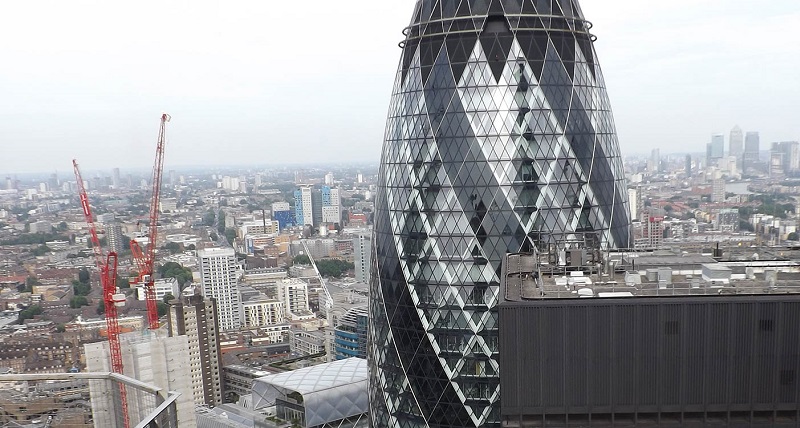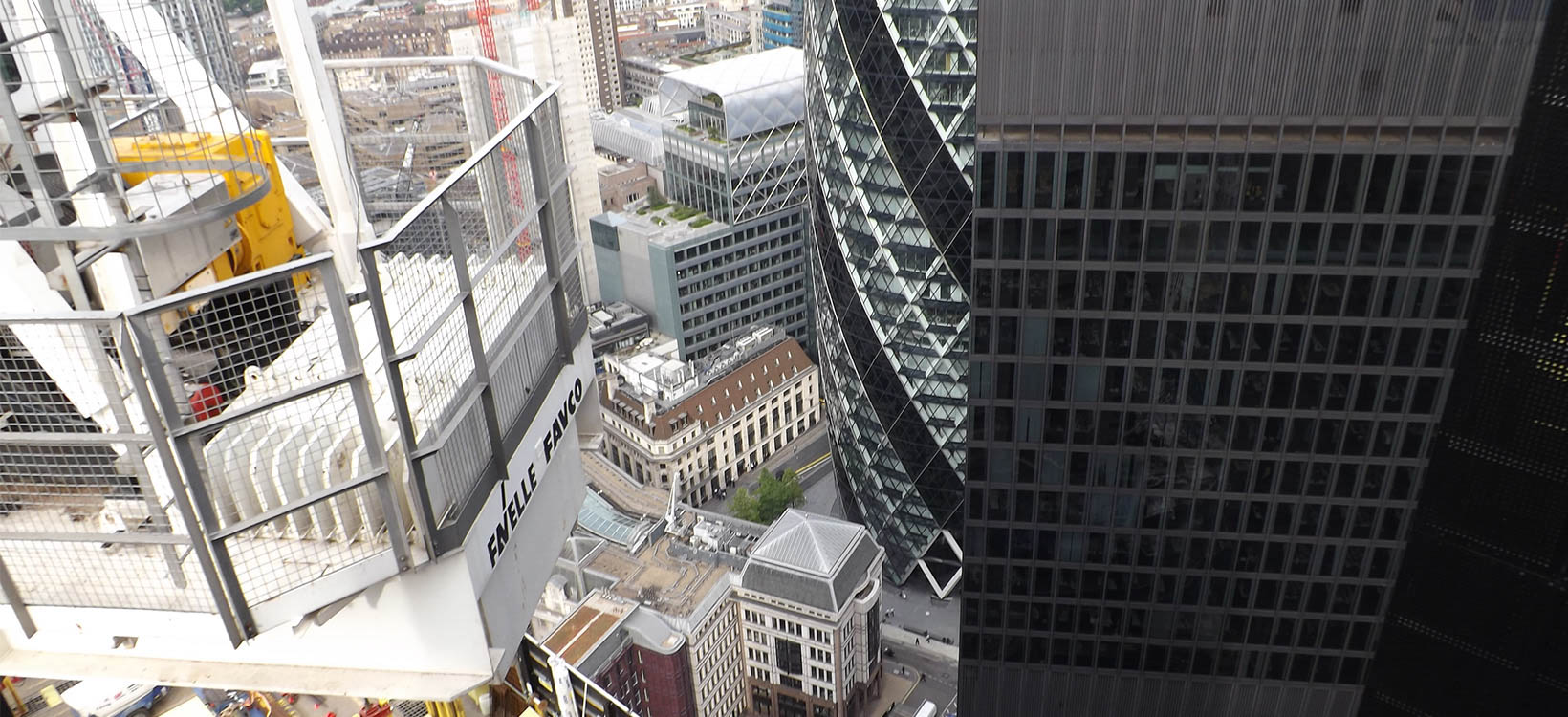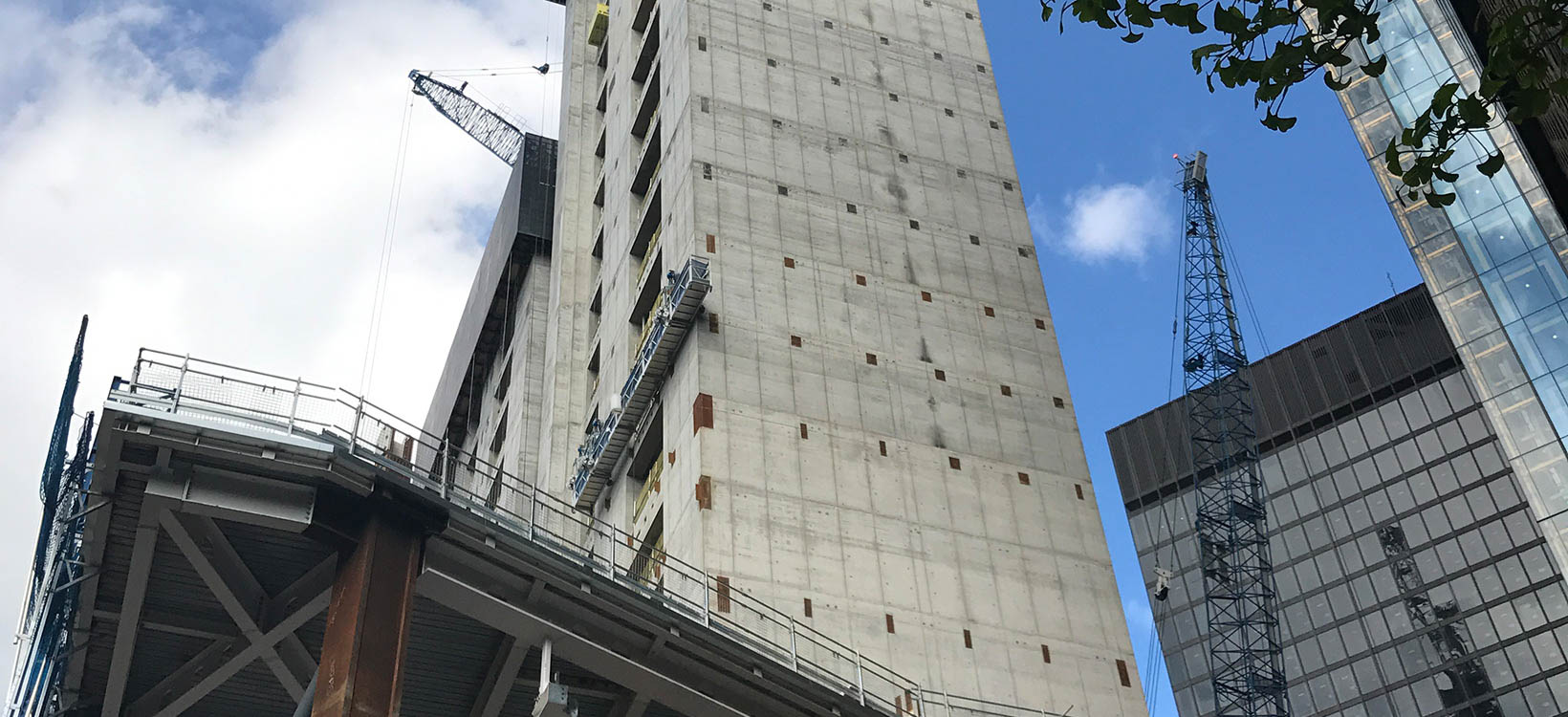Precise positioning in London’s sky
Case study

Author: Renata Barradas Gutiérrez
City landmarks are not built overnight. In between planning, design and construction, there are other crucial activities - just like monitoring and positioning - happening at the same time.
22 Bishopsgate, a 287-metre-tall skyscraper, rose through the air in London’s financial district in the United Kingdom. Planned with the ambition to be the capital’s first ‘vertical village’, 22 Bishopsgate is London’s second tallest building.
To construct the cores that make this landmark rise, Careys Civil Engineering, a well-known construction company with a proven track record of delivering projects that enhance the built and natural environments of communities and infrastructure in the United Kingdom and Ireland, delivered the concrete works using a self-erecting jump form system – the first of its kind to be used in the UK.
Building 62 storeys, with a floor space of more than 120,000 square metres required Careys Civil Engineering to pour 58,000 cubic metres of concrete and use 7,500 tonnes of reinforcement. Thriving on complex and challenging projects of this magnitude requires innovative methodologies
– just like the building positioning system developed for Careys Civil Engineering by Leica Geosystems. This tailor-made solution for jump form high-rise buildings was chosen by Careys Civil Engineering to provide reference coordinates to monitor and carry out the surveying tasks during construction.
Doing it the Careys’ and Geosystems’ way

The two core walls of 22 Bishopsgate were constructed by Careys Civil Engineering in a sequence of several concrete pours using a jump form system. Jump form systems are working platforms or rigs for fixing of the formwork, steel fixing and concreting. This system is suitable for the construction of multi-storey vertical concrete elements in high-rise structures.
After each jump, or elevation of the rig to build a new level, the Careys Civil Engineering surveying team needed reliable coordinates to proceed setting out the structure and verifying the correct positioning of the core. The main task of the automated positioning system Leica Geosystems created is to obtain precise and reliable coordinates during the entire construction process that are not influenced by the movement of the building.
This tailor-made GNSS-based monitoring solution consisted of:
- Seven Leica GM30 GNSS receivers for monitoring
- Seven Leica AR10 GNSS antennae
- Leica GeoMoS Monitor
- Leica GNSS Spider software
- HxGN SmartNet reference station network
- Tiltmeters
With the above-mentioned hardware and software combination, Leica Geosystems developed a procedure, using GNSS observations combined with tiltmeters (precision inclination sensors), to obtain reliable coordinated points at the top of the formwork of the ascending skyscraper. Those coordinated points, or Active Control Points (ACP), are sighted by Leica Geosystems robotic total stations to setup its coordinates and orientation.
“Above a certain height, in central London, ground control points were not usable or visible anymore; the GNSS system was able to provide reliable coordinates with no need for ground controls,” said Damien Watson, senior engineer at Careys Civil Engineering, Plant and Fleet department.
To set up the automated positioning system, GNSS stations were coupled with Leica Geosystems 360-degrees prisms, so the positioning information provided by the GNSS sensors was available to be used as reference points for the surveyors performing the survey of the core wall with Leica Geosystems robotic total stations.
High-precision tiltmeters, fixed at the same locations of the GNSS antennae, were coupled to the GNSS station to track the verticality of the GNSS antennae in order to provide, at each computation, the most accurate coordinates. SmartNet network was used to provide reference coordinates to the GNSS stations on the rigs and compute the baselines.
Ensuring a smooth data flow

To obtain the ACP, data was collected, stored and post processed with Spider Software at a dedicated PC to deliver the most accurate coordinates for the team. Spider is the control centre software where positioning information was computed. The data from the GNSS stations on the rig and data from the SmartNet Reference Network was combined to provide every six hours the most accurate set of coordinates for each point for Careys Civil Engineering team. Spider coordinates were automatically transferred to GeoMoS Monitor where they were transformed into local coordinates and adjusted based on tiltmeters data.
“The Leica Geosystems solution allowed for a fully-automated workflow and computation of the results and fast delivery of coordinates when required, optimising costs and time of operation for the surveying team compared to different methodologies,” said Watson.
The team was, furthermore, able to check the number of satellites tracked and data quality of each single point in the Spider interface in real time. All these quality checks provided in real time the high level of positioning measurement accuracy that Careys Civil Engineering needed to build this landmark.
After each jump and processing period, new valid control points coordinates were available for the robotic total station to measure any mark or object in the structure. The Careys Civil Engineering team on site then proceeded to set up the robotic total station at the top level where all control points were visible.
The robotic total station determined its own position and orientation observing the control points and checking the results with the coordinates given by GeoMoS. In this way, the robotic total station observed all relevant points to be checked during the construction.
Building on the rise

Accurate and reliable positioning on the status of structures displayed as actionable data is crucial to make fast and informed decisions and react to potential problems. The GNSS-based monitoring system has proven so successful that Careys Civil Engineering will be using it in future projects, such as the construction of a new tower in Manchester.
“The Leica Geosystems solution automatically delivered reference coordinates to the surveying team when needed, and the accuracy got better and better while the structure was growing building confidence after every jump,” concluded Watson.


























